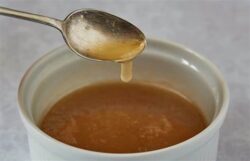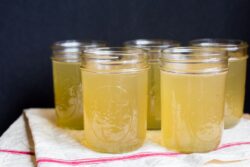Fishermen love to eat fresh fish. Filets are often the best way to cut off the most meat and avoid the bones. The guts, heads, and bones are then thrown away. These remains have useful purposes and value.
So, what can you do with fish wastes?
Garden fertilizer Burying fish remains into the garden or ground will create wonderful compost.
Chum blocks Freeze the fish trimmings and entrails into a block. Use them to chum fish when on a lake or bay. You can anchor them in a weighted milk crate tied to a rope that can float next to the boat or sunk to the bottom. Small blocks, that fit through the ice hole, can be lowered to the bottom, where allowed. Check regulations about chumming in your area.
Animal/ pet food Grinding up the fish remains can add great nutrition to pet food. I would avoid the entrails, but the rest of the fish makes a tasty treat for dogs and cats. Pigs and other livestock may also enjoy their surf and turf. Entrails can be composted.
Seafood shells You can also make stock from shrimp and crab remains for a different flavor.
Catching a limit of fish can be a lot of effort. Why waste healthy nutrition that you worked so hard to capture. I guess if you were Alone, or on a Survivor show, you would make more of an effort to utilize the entire resource.
Try making a fish stock by simmering the head and skeleton remains. Fish head soup is a popular Asian dish. Fish stock is also used in a variety of tasty dishes and soups. Bone broth is also a popular way to enjoy a tasty and healthful soup. 
Fish stock adds a rich flavor to your meals. You can store the usable fish remains in the fridge for a few days. Place them in a plastic bag or sealed container. You can freeze them for 2-3 weeks. Once you make the fish stock, you can use it for soup stock, chowders, or sauces. 
Fish skin can be used when deep fried or cooked. Just be cautious when using fish that are from a Consumption Warnings watershed. Many of the toxins that may contaminate a fish are stored in the fins, skin, and rib/ belly fat.
Remove the guts and fins, and tail. Scale the head if needed. Rinse the carcass and wipe off any slime. Use a knife or scissors to cut the skeleton into small pieces that will fit into a pot. Cover the pieces with water and spice with some salt and pepper. Heat until boiling, then reduce the heat to simmer for 30 minutes.
You can now strip any fish meat from the bones. Save the meat for later recipes and discard any bones. The flaked fish can be frozen. Some chefs enjoy adding vegetables and fresh herbs to their flavorful stock. Carrots, celery, and other items will add spice and flavor.
Strain the cooked fish with a double layer of cheesecloth. This will remove any scales, or fine bones. Return the stock to the pot and bring to a boil. Allow the stock to reduce to half of its volume. Cool and refrigerate or freeze. Label and date the stock.
I have also seen entire fish heads and skeletons floured and fried. You can also coat with BBQ sauce and grill them. The cheek meat in the heat and nutrition from the bones adds healthy nutrition to our diet.
You will be amazed at the rich flavor that fish stock adds to seafood and fish recipes.
Here fishy, fishy, fishy!
Montana Grant